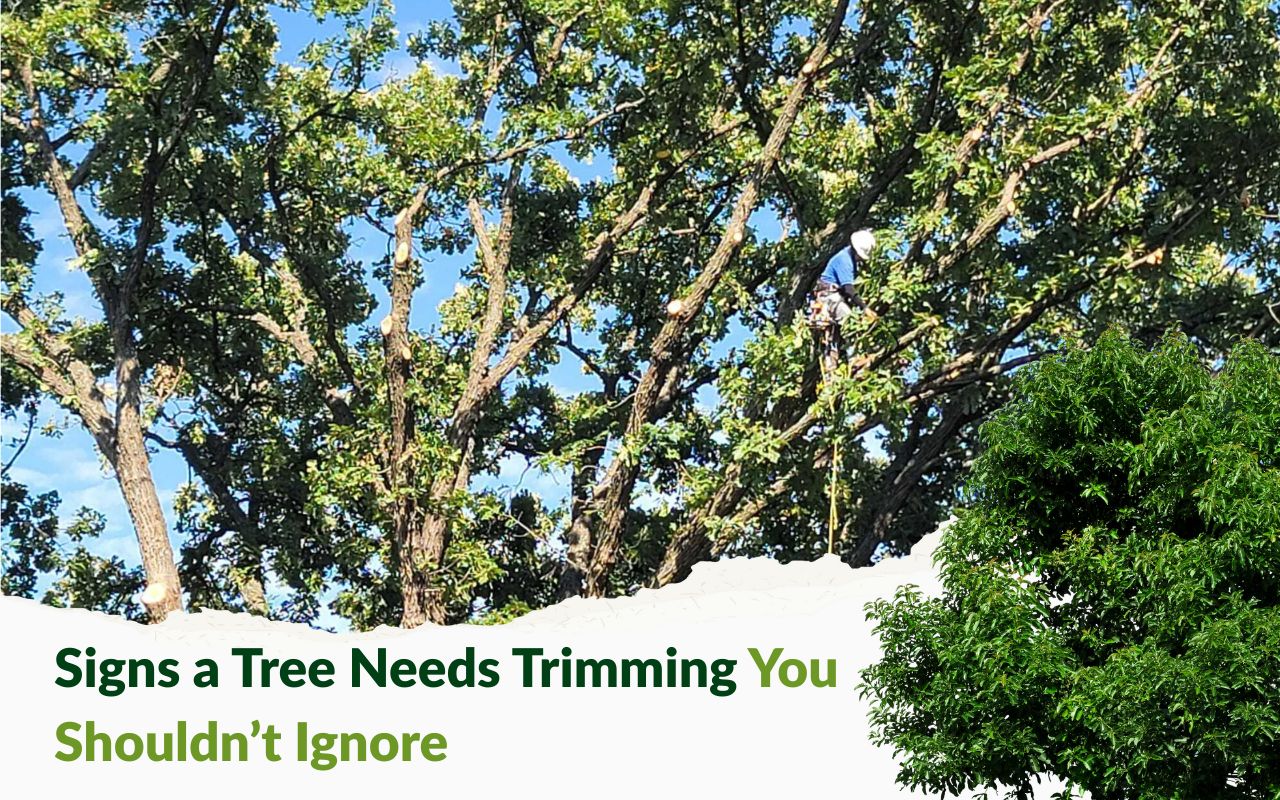
It’s not always obvious when a tree needs attention. But recognizing the signs a tree needs trimming can save you time and money and even prevent property damage. Waiting too long often leads to more severe issues that could’ve been avoided with routine care.
At Perez Landscape and Trees LLC, we help Kansas City homeowners spot these early signs and create a trimming schedule that keeps their trees in great shape. If you’ve ever wondered how often should trees be trimmed—or what to watch for—this guide breaks it all down.
How Tree Trimming Helps Prevent Bigger Problems
Pruning isn’t just about appearance. Trimming trees at the right time helps prevent limbs from becoming overgrown, weak, or unstable. Branches that are too long or too heavy can crack, especially during storms, and may fall unexpectedly.
Trimming also allows more sunlight and air to reach inner limbs and nearby plants. Without this airflow, trees are more prone to fungal infections, pest buildup, and slower growth. Over time, proper trimming supports tree structure and reduces stress on the trunk and roots.
A proactive tree care routine is the best way to prevent problems before they start.
Common Signs a Tree Needs Trimming
When trees are overdue for trimming, they usually let you know. One of the most noticeable signs is low-hanging limbs that obstruct driveways, walkways, or touch your home’s siding. These branches aren’t just unsightly—they can also cause scratches, roof damage, or block outdoor lighting.
Another red flag is a tree that looks uneven or lopsided. If one side is growing faster than the other, it puts the tree off balance and increases the risk of tipping or breaking. Trimming can correct this growth pattern and redistribute the weight more evenly.
You might also notice limbs with very few leaves or branches that suddenly die. These could be signs of internal disease or rot. Leaving them untreated can allow decay to spread through the canopy. In some cases, trimming diseased limbs early is enough to save the tree.
How Often Should Trees Be Trimmed Based on Condition
There’s no universal schedule that fits every tree, but visible warning signs are a good reason to trim sooner. Younger trees tend to need shaping every few years, while mature trees can go three to five years between full trims. Trees that bear fruit or flower often need attention more frequently to support production.
If your tree is near power lines, structures, or shows signs of pest activity, trimming should be done right away—regardless of the calendar. These conditions create urgent safety risks that can’t wait for seasonal maintenance.
To avoid guessing, a professional tree assessment can help identify what’s needed now and what can wait.
FAQs About Tree Trimming and Warning Signs
What’s the biggest sign my tree needs trimming?
Overhanging branches near your home or dead limbs hanging loosely are major red flags. These can cause damage or injury and should be trimmed right away.
Do dying branches mean the whole tree is sick?
Not always. Sometimes trimming one area is enough to stop the spread of disease. Catching these issues early increases the chance of recovery.
How often should trees be trimmed if they seem healthy?
Even healthy trees need attention. Most trees benefit from trimming every few years, but a custom plan based on growth and location works best.
Stay Ahead of Tree Damage With Timely Trimming
Knowing the signs a tree needs trimming can help you act early and protect your property. It’s easy to overlook small changes in your trees—until a limb falls or a storm exposes hidden damage.
At Perez Landscape and Trees LLC, we provide expert tree trimming and removal services throughout Kansas City. Whether it’s time for a routine trim or you’ve spotted a warning sign, we’re here to help.
Contact us today for a free quote and keep your trees healthy and safe.
